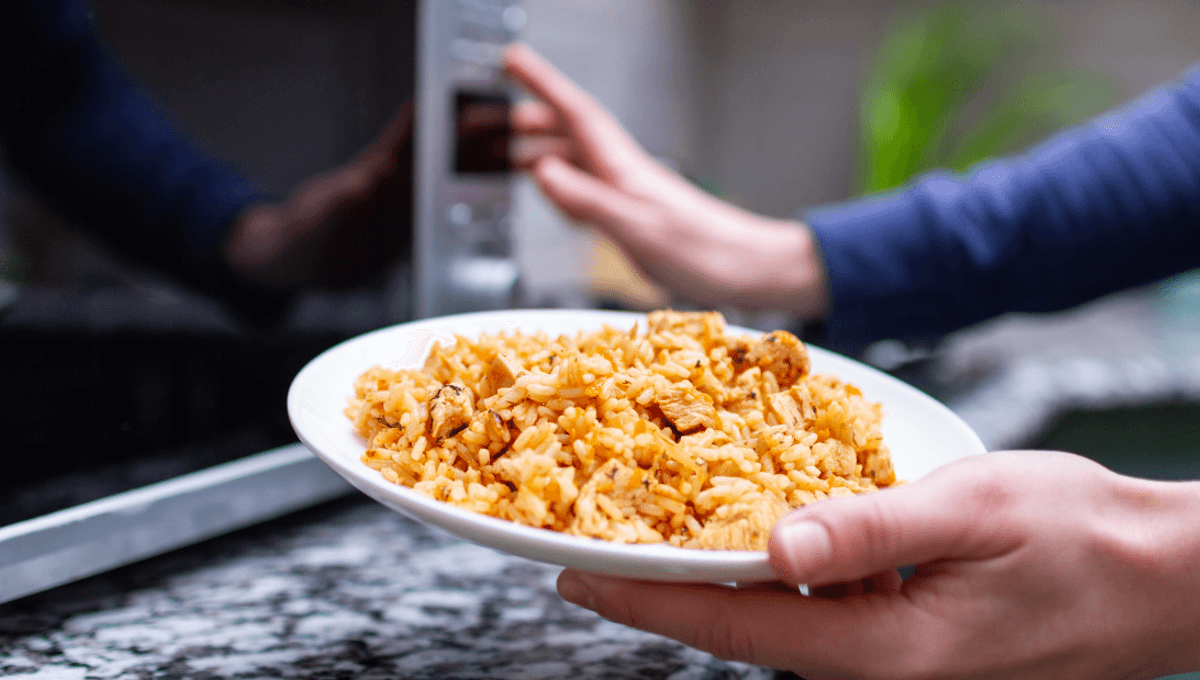
Warm, fluffy, steamy rice is delicious, but unfortunately, it also provides the perfect conditions for cultivating potentially nasty bacterial growth. Bacillus cereus, among other bacteria, are common on uncooked rice, and boiling alone isn’t sufficient to kill them off as they produce spores that can tolerate the heat.
Once the cooking is over, rice left to rest at room temperature can play host to a bacterial bonanza as they multiply and release harmful toxins, sometimes leading to B. cereus food poisoning, also known as “fried rice syndrome”. Avoiding it comes down to how you prepare, cook, and keep your rice after cooking.
Preparing and storing rice
Washing your hands is always a solid start when preparing food, and while washing rice can change its texture and get rid of bugs or heavy metals lurking among the grains, it won’t get rid of B. cereus. This is because the bacteria are embedded in the grains, so they’re not going anywhere.
You want to bring rice to a boil before simmering to keep the temperature up so you don’t fall into the danger zone by creating a hot tub for multiplying bacteria. The cooked result should then be served immediately, or cooled quickly and put into a container for the fridge or freezer. Avoid leaving cooked rice sitting out for more than an hour.
How to reheat rice
Leftover rice can be microwaved, fried, or steamed while reheating, but it’s only safe to do so if the cooked rice has been cooled and stored correctly. If you took to bed with a carton of fried rice and some Netflix before drifting off for four hours, it’s possible that reheating your room-temperature rice could end badly.
This is because warming and cooling and warming again gives harmful bacteria like B. cereus a great opportunity to get growing, increasing your chances of fried rice syndrome. It’s worth noting that fried rice syndrome isn’t specific to fried rice, you can get it from any kind. However, fried rice recipes that call for leftovers are an easy place to trip up as by the time your final dish is ready it’s been heated twice.
How dangerous is fried rice syndrome?
B. cereus food poisoning can be fatal in severe cases, and while it’s become known as fried rice syndrome it can also occur in other foods like pasta. A 2011 case study ruled that a 20-year-old student died of B. cereus poisoning within 10 hours of eating five-day old pasta. A similar case occurred in 2003 when a family ate 8-day-old pasta salad, resulting in one death and five children being admitted to hospital.
What are the symptoms of fried rice syndrome?
Fried rice syndrome often presents with vomiting and diarrhea triggered by the toxin B. cereus produces as it grows. In most cases, the illness will be self-limiting and over within a day or two, but for some people, it can progress and even be fatal.
Antibiotics aren’t effective because it’s the toxin that causes the illness rather than the bacteria, so treatment mostly centers around replenishing fluids until the worst of the gastrointestinal symptoms have passed. This is why prevention is the best protection, so it’s probably best you pass on reheating that rice for a second time.
You never know how many times that shrimp fried it.
All “explainer” articles are confirmed by fact checkers to be correct at time of publishing. Text, images, and links may be edited, removed, or added to at a later date to keep information current.
The content of this article is not intended to be a substitute for professional medical advice, diagnosis, or treatment. Always seek the advice of qualified health providers with questions you may have regarding medical conditions.
Source Link: How Do You Reheat Rice? Carefully, Unless You Want Fried Rice Syndrome